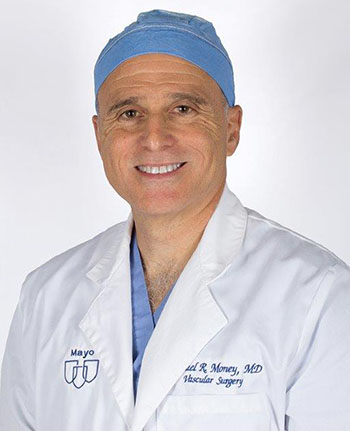
By Samuel Money
Open vena caval surgery is rare. It is mainly performed for oncological indications when the inferior vena cava is involved by an adjacent tumour. One of the most common malignancies that affect the inferior vena cava is renal cell carcinomas of the kidneys with thrombi that extend into the inferior vena cava lumen or invade its wall. This occurs more commonly on the right side due to shorter renal vein. Removal of these tumors and accompanying thrombi provide survival benefits for those patients. Additionally, among the non-oncological indications of inferior vena cava surgery is the occasional need to remove inferior vena cava filters that have been inserted to prevent pulmonary emboli and could not be retrieved through conventional endovascular approaches.
Due to the morbidity of open approach, a minimally invasive treatment option is an attractive alternative in this patient population where they commonly harbour multiple pre-existing comorbidities. The minimally invasive treatment through simple laparoscopic approach is challenging with various technical limitations and a steep learning curve. Whereas, the robotic surgical system provides the advantages of better visualisation with magnification, three-dimensional vision, tremor filtration, and seven degrees of freedom in addition to a more ergonomic and comfortable operating environment. Moreover, the presence of a fourth robotic arm provides a constant traction throughout the procedure. With all of these benefits robotic approach provides a promising minimally invasive treatment option in these clinical scenarios.
In an effort to evaluate the efficacy of the da Vinci Surgical System (Intuitive Surgical) for vena cava surgery we undertook this small prospective study. Over a three-year period we performed robotic vena cava surgery on 10 patients. In seven patients we performed radical nephrectomy and inferior vena cava tumour thrombectomy whereas three patients had and inferior vena cava filter removal. In patient who had inferior vena cava thrombectomies, six cases were right-sided. All of the tumours were class T3b lesions. The tumour extended into the inferior vena cava anywhere from one to eight centimetres. All the procedures were accomplished robotically with no need for open conversion. Our approach mirrored the open surgical approach where the inferior vena cava was dissected for enough length to gain proximal and distal control with vessel loops, all lumbar veins were isolated and controlled with surgical ties as we would do in open cases. The inferior vena cava was opened with a robotic Potts-Smith scissors and the tumour was removed. The cava was then closed using 5-0 Prolene. The kidney and the extending tumour were then removed through a small incision in a laparoscopic bag.
With regard to the inferior vena cava filter patients, all three patients had inferior vena cava filters inserted to prevent pulmonary emboli. At the time of presentation, patients were symptomatic and complained of abdominal pain. The average duration between filter insertion and removal was three years. All three patients had at least two attempts to remove these filters with endovascular techniques. Multiple techniques were used including endovascular forceps and snaring of the cava filter. They were all unsuccessful. The robotic surgical approach was similar to thrombectomy. However, some of these filters had to be broken and retrieved in pieces. One of the filters had perforated the inferior vena cava wall and was lying in the serosa of the duodenum. Another one of the cava filters had perforated the cava and had embedded itself into the liver.
Postoperatively, patients started ambulating on the first postoperative day and a regular diet was resumed on the second postoperative day in nine out of 10 patients. There were no postoperative complications. The mean length of stay for the total group was 3.5 days. Mean operative time was approximately 4.5 hours for the radical nephrectomy and cava tumor removal and three hours for the inferior vena cava filter removal. Blood loss was 428ml and 250ml for the nephrectomy and the filter removal, respectively.
One of the main concerns of using the robotic platforms while operating on vascular structures is the longer time required for conversion in case a vascular complication took place. One way to overcome this limitation is to have an experienced laparoscopic surgeon assisting on the bed side to temporise the bleeding while the surgeon prepare for conversion.
The use of robotic surgery for vena caval interventions is still in the early stages and the future of this technique clearly needs to be delineated. We have described our institution experience with these complex interventions where the robot was successfully used for vena caval surgery. Other centres have described using the robot mainly for vena caval tumour removal. The addition of using the robot for filter removal is a novel approach and can potentially extend to other indications. More work needs to be done before establishing the robotic approach in IVC surgery. However, this report clearly demonstrates the feasibility of inferior vena cava robotic surgery.
Samuel Money is chair of Surgery, Mayo Clinic, Phoenix, USA. He has no conflict of interest with regards to this article.










